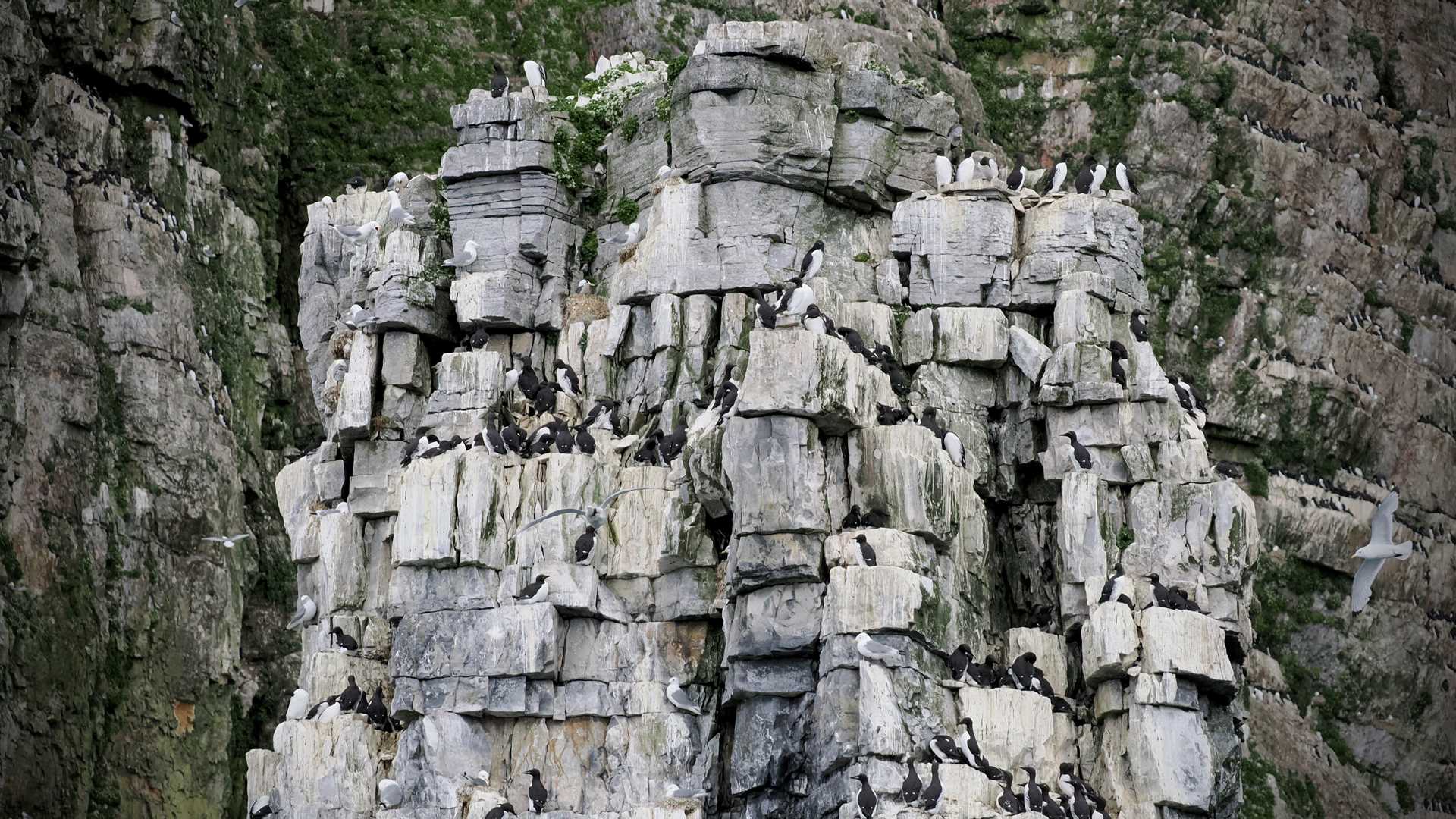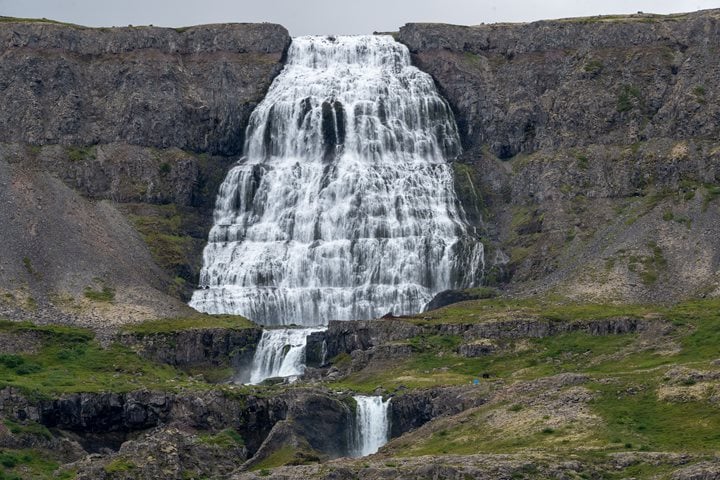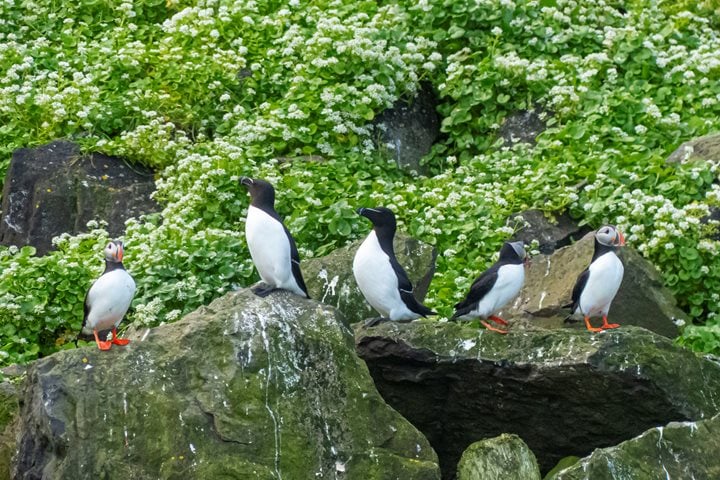National Geographic Resolution arrived at Bear Island (Bjørnøya) just as the morning fog lifted. Bear Island is the southernmost island in the Norwegian Svalbard archipelago and is a haven for nesting birds, which we observed from the ship and then again up close on our morning Zodiac tours. Hundreds of thousands of bird pairs (black-legged kittiwakes: ~130K; northern fulmars: ~30K; glaucous gulls: ~650K; common guillemots: ~72K; and Brunnich's guillemots: ~110K) are on record for visiting the island last year.
Our morning Zodiac operations presented a unique opportunity to experience these seabird colonies amongst a cacophony of calls from Bear Island's feathered inhabitants. With lots of keen eyes on the water, we were able to spot some less common species, including gannets, puffins, a razorbill, and a great skua feeding on a guillemot egg. The average clutch size for guillemots is two eggs, which are a conical shape to prevent them from rolling off ledges. Adults were observed facing toward the cliff to protect their eggs from predators.
With uncharacteristically calm seas, Zodiacs were able to not only drive around the cliffs but through the longest rock tunnel in Svalbard called the “Pearly Gates,” where they landed on a remote beach in the afternoon allowing guests to explore Bear Island on foot. As we departed, a rainbow framed our anchorage, and the mist rolled back in. But the wildlife encounters did not cease. By dinner we were surrounded by a pod of Atlantic white-sided dolphins, and by 10:00 p.m., by pods of dozens of humpback and fin whales.







